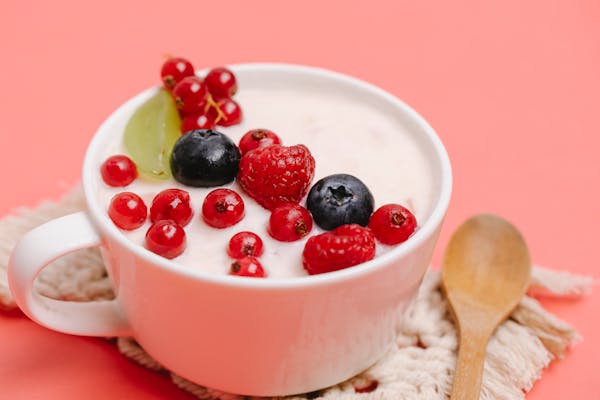Those with immune system issues or serious health conditions should talk to their doctor before trying probiotic yogurt. It can also have high amounts of sugar and calories, so it’s best to consume it in moderation.
Fresh toned milk was inoculated with yogurt starter cultures (ST and LB) at different levels and incubated. The nutritional composition of yogurt varied according to the strain used and the fermentation duration. Check out more with gcmaf yogurt.
Benefits
The probiotic bacteria that are added to yogurt help restore the balance of gut microbes when they’re lost due to antibiotics or other factors. These bacteria also promote healthy digestion, improve mood and boost immunity.
However, it’s important to note that probiotic yogurts are high in sugar and calories. This means it’s important to consume them in moderation to reap the benefits and not gain weight.
Scourboutakos and her colleagues found that most supermarket brands claim they have probiotics, but only a few of them met the minimum standard. In order to make a health claim, yogurt must contain at least one billion probiotic bacteria per serving.
The 13 reviewed studies were classified into three categories based on the study outcomes, including metabolic, inflammatory and infectious outcomes. Consuming probiotic yogurt improved the metabolite profile, insulin levels and lipid profiles in individuals with non-alcoholic fatty liver disease (NAFLD). Consumption of fortified kefir containing Lactobacillus acidophilus and Bifidobacterium lactis reduced the concentration of inflammatory markers in the colon tissue of IBS patients.
Ingredients
When navigating the endless yogurt aisle at the grocery store, it’s important to remember that not all probiotic products are created equal. In fact, many of them may contain fewer microbes than advertised.

To ensure you’re selecting a probiotic-rich product, look for the “live and active cultures” label. These are the bacteria that are friendly to your digestive system, reducing symptoms such as gas, bloating, diarrhea and constipation.
Yogurt is also a source of protein, calcium, phosphorus, potassium and vitamin D. Look for a serving size and the % Daily Value on the label to help you track your nutrients.
For instance, Activia by Dannon contains skim milk, sugars (sugar, corn syrup and fruit juice concentrate for colour), whey, modified food starch, natural flavors, carrageenan, annatto for color and active probiotic culture (L. bulgaricus, S. thermophilus and Bifidobacterium BB-12). It is also gluten-free. Other popular yogurt options include kefir, which is made from fermented milk and contains up to 61 different strains of bacteria.
Flavors
Adding probiotic yogurt to your diet provides many gut-health benefits. It can help balance the microbial community in the digestive tract, boost immunity, assist with weight management, and more.
When choosing probiotic yogurt, look for a label that lists the number of live active cultures and which strains are included. The two most common probiotics are Lactobacillus and Bifidobacterium, and different strains have varying health effects. Some, like L. acidophilus, may help prevent diarrhea from antibiotics and improve symptoms of irritable bowel syndrome, while others like B. bifidum may have antimicrobial effects.
Yogurt comes in a wide variety of flavors and textures, allowing you to find the perfect option for your gut health goals. From store-bought convenience to homemade milk kefir, there are options for every budget and taste.
Storage
Probiotic yogurts are intended for consumption by humans and must survive not only during shelf life but also through the harsh environment of the gastrointestinal tract. To do this, they must be able to survive both the acidic conditions of the stomach and the bile salts in the intestinal tract. This is accomplished by incorporating strains that are able to withstand the conditions during processing and storage.
Despite the high number of probiotics present in these products, it is common to see a decrease in the counts of bacteria after several days of refrigerated storage. This may be due to the secretion of inhibition metabolites (e.g. bacteriocins and reuterin) by the probiotics, which inhibit the growth of other microorganisms in the product.
It is important to note that the probiotics in this study remained below the threshold of 10 6 cfu/g required for probiotic yogurt according to the Egyptian Organization for Standardization and Quality. However, they did show a tendency to increase firmness over the 35-d storage period, especially those samples containing L. delbrueckii ssp. bulgaricus.